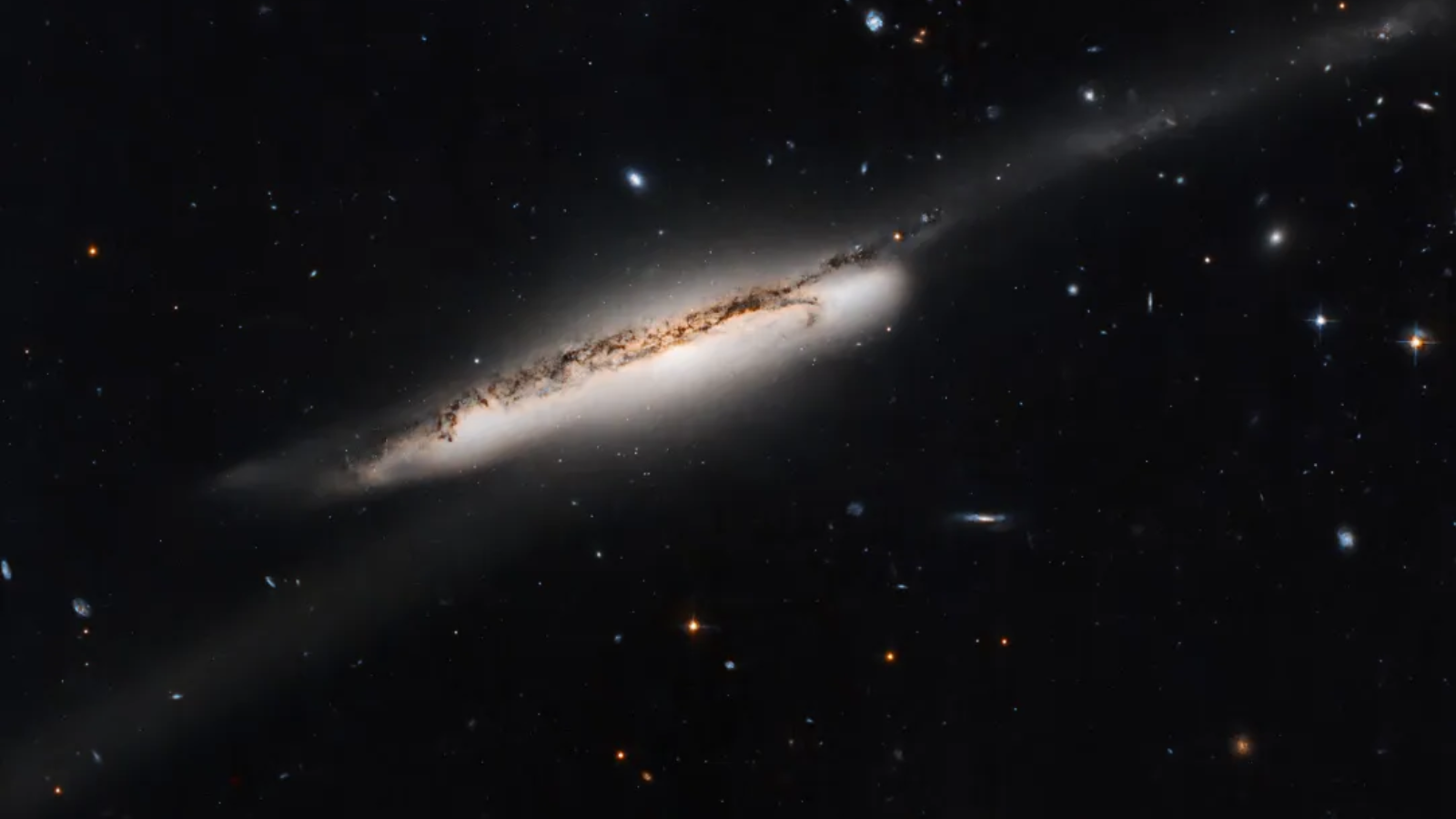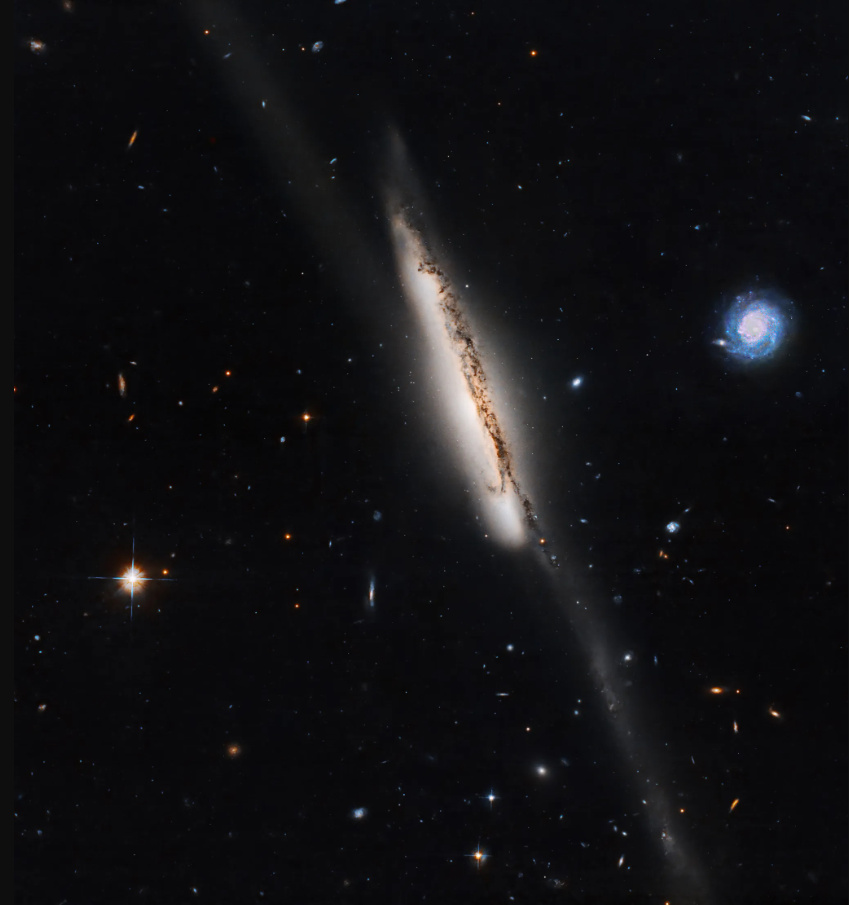Hubble Telescope spies massive 'bridge of stars' connecting 2 galaxies on collision course (image)
The faint streamer of stars and gas may hint at what will happen when the Milky Way and Andromeda meet in 4 billion years.

A stunning new Hubble Space Telescope image shows a huge 'bridge of stars' extending from one of the galaxies in a galactic grouping to another.
The image focuses on the galaxy Arp 295a, from which the 250,000 light-year-long streamer of stars is stretching, as it is seen edge-on by Hubble and surrounded by a milky-colored envelope of gas and dust. Also visible in the full image is the nearby galaxy Arp 295c, which appears as a smaller bright blue spiral in the top left in the full Hubble telescope image.
Along with Arp 295b, which is not seen in the Hubble image, these galaxies make up the loose galactic grouping called Arp 295, which is located around 270 million light-years from Earth in the direction of the constellation Aquarius.
While a gorgeous image in its own right, the photo could also foreshadow what could eventually become of our own cosmic home, as Hubble's observations of the group may hint at what could happen when the Milky Way and Andromeda galaxies collide in 4 billion years.
Related: Hubble Space Telescope sees colliding galaxies aglow with stars
The streamer of stars seen by Hubble bridging the gap between the two Arp 295 galaxies was created when two galaxies in the grouping circled each other with the gravitational interaction that ensues, drawing out gas, dust and stars.
Galaxies that come close enough to each other to gravitational disrupt their shapes are known as interacting galaxies. This galactic interplay can last for billions of years as the galaxies involved loop around each other, making multiple close passages.
Get the Space.com Newsletter
Breaking space news, the latest updates on rocket launches, skywatching events and more!

Eventually, the repeated close passes between interacting galaxies can result in these galaxies colliding and merging.
This more permanent interaction changes the shape of the progenitor galaxies, wiping out features such as spiral arms and creating a more homogenous, shapeless, irregular galaxy. The merger also causes an influx of gas into the resultant galaxy, which causes a bout of intense star formation called a starburst, as collapsing clouds of gas and dust are the building blocks of new stars.
As the merger continues, the two supermassive black holes with masses millions or billions of times that of the sun at the heart of the colliding galaxies head toward the center of the newly created galaxy, where they will spiral around each other.
This causes the emission of gravitational waves that carry away angular momentum from the supermassive black hole binary, causing them to draw together and eventually merge themselves, creating a new, even more massive supermassive black hole.
Observing interacting and merging galaxies gives astronomers a hint of the fate that awaits the Milky Way and its neighboring galaxy, Andromeda.
The two spiral galaxies are approximately 2.5 million light-years away and are drawing together at a rate of around 671,000 miles per hour (1,079,870 km/h), about 450 times as fast as the top speed of a Lockheed Martin F-16 jet fighter. As a result, our galaxy and Andromeda are predicted to merge in around 4.5 billion years.
In 2006, scientists simulated this clash and saw the sun and the solar system could be pushed closer to Sagittarius A* (Sgr A*), the supermassive black hole at the heart of the Milky Way, as a result of the merger.
From here, our star may either be ejected from the Milky Way altogether or, if it comes close enough to the 4.5 million solar mass black hole, maybe shredded by the immense gravity of Sgr A*.
Join our Space Forums to keep talking space on the latest missions, night sky and more! And if you have a news tip, correction or comment, let us know at: community@space.com.

Robert Lea is a science journalist in the U.K. whose articles have been published in Physics World, New Scientist, Astronomy Magazine, All About Space, Newsweek and ZME Science. He also writes about science communication for Elsevier and the European Journal of Physics. Rob holds a bachelor of science degree in physics and astronomy from the U.K.’s Open University. Follow him on Twitter @sciencef1rst.









